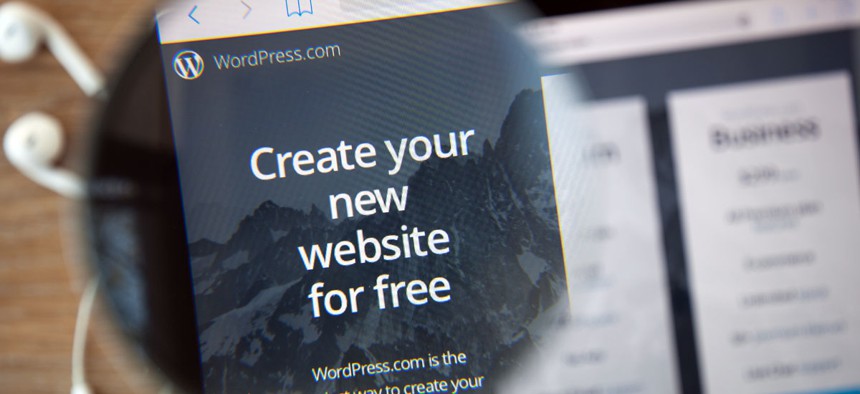How to Secure WordPress in 10 Steps

GongTo/Shutterstock.com
The mitigations needed to secure a WordPress system and fortify it from attacks are many.
Larry G. Wlosinski is a senior associate at Veris Group.
WordPress is a free and open source content management system used by more than 23.3 percent of the top 10 million websites, according to Wikipedia, and it’s also the most popular blogging system in use, with more than 60 million websites.
WordPress has been around since May 2003 and has over 37,000 plugins. Its applications are accessible online and via mobile devices, allowing for many paths to compromise. Securing WordPress should be a top priority because of the large number of applications, the number of organizations that use it, the lack of security awareness of some users and developers, and weak security practices.
Weak or nonexistent security practices include outdated sites and software components, unsupported systems (i.e., patching of operating system, application software and its components), poor database and server configurations, and abandoned sites.
The compromised sites can and have been used as launching points for virus and drive-by attacks, a window into your network systems and the data, and a place for misuse. Depending on the template, plugin and system architecture, a WordPress website can not only be the source of a Denial of Service attack, but also a means to obtain sensitive, private, proprietary and personal information on your organization and staff.
As of April 2015, WordPress has 194 unique vulnerabilities and 21 known exploits, according to the Common Vulnerabilities and Exposure database. Weaknesses in the programs, supporting templates and plugins can increase the business risk at the organization, mission/business and information system levels.
Recovery from an attack could affect your network, your systems and the data. If the data is sensitive or personal, there would be additional ramifications because of government regulations regarding health and personally identifiable information. Reporting and responding to data breaches and information spillage can be costly and have severe repercussions.
The mitigations needed to secure a WordPress system (application and/or blog) and fortify it from attacks are many. They address technical, policy and procedural changes. Administrators will need to continue due diligence on a continual basis to update WordPress based on new vulnerabilities posted by the National Vulnerability Database and other sources. Recommended mitigations include:
- Backups. Make regular backups of site files and databases.
- Working environment. Secure the admin folder by limiting the IP addresses that can access it, change the name of the admin account, and track number of attempts to use it.
- Sensitive Files. Lock down access to the wp-config.php file as it contains sensitive data, and encrypt cookies to protect against cookie hijacking.
- Access. Use strong passwords, implement least privilege to WordPress files and folders, and use encrypted SSL connections on admin related pages and functions.
- Configuration. Change default database table prefix from default settings, and hide the version information to reduce the information hackers use.
- Need to know. Limit search engine indexing spiders to only relevant files and folders on the domain.
- Testing. Perform IV&V in a separate development environment prior to production implementation.
- Continuous monitoring. Keep the software up to date, patch regularly and monitor for problems daily by running scans and subscribing to security alerting organizations.
- Checklists. Use a security checklist to aid in fortifying the system design, access controls, configuration, maintenance and operation.
- Tools. Use tools that harden the hosting, working environment, access, configuration management, maintenance and operations areas.
All of these actions are critical in reducing the likelihood of system and network compromises.
WordPress developers need to use the many websites that provide security guidance to prevent compromise and data spillage as well as resolve problems. A simple search on the Internet can yield information on WordPress issues with workarounds. Common errors, vulnerabilities, exploits with troubleshooting tips and solutions, “how to” instructions and guidance can also be found to aid programmers in system coding and development as well as resolving operational issues. For more in-depth information, you can also order books on these subjects.
Don’t be caught in a net of malicious activity. WordPress developers and users need to implement best practices in development and preventative controls and be ever vigilant to prevent problems that affect their system and, ultimately, their organization.
(Image via GongTo/ Shutterstock.com)
NEXT STORY: 10 Facts about Federal Websites






 By
By